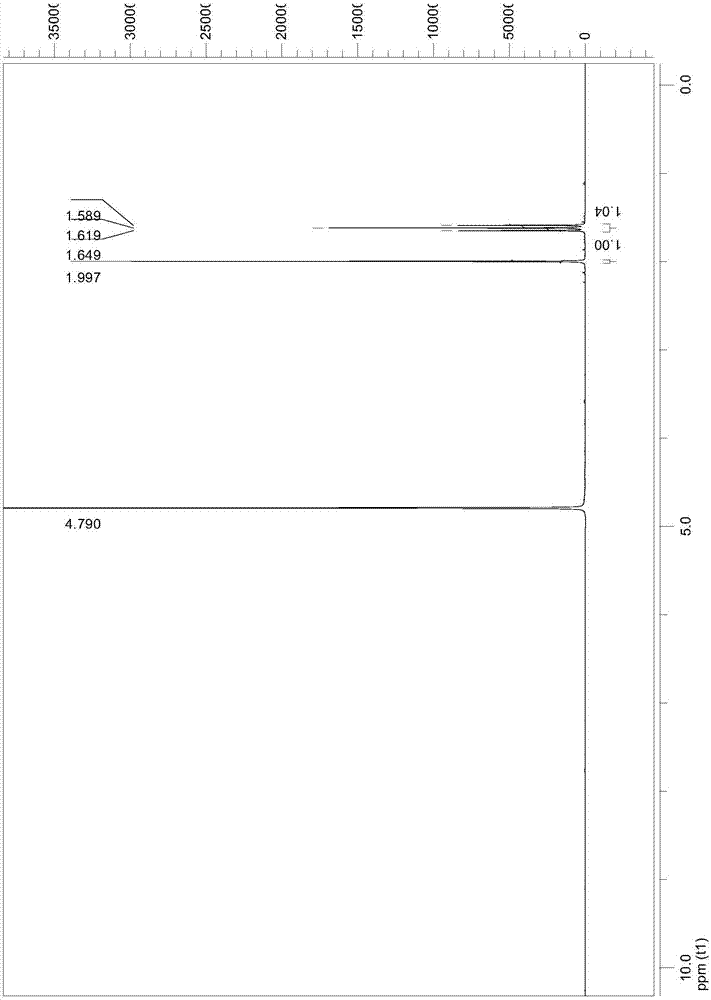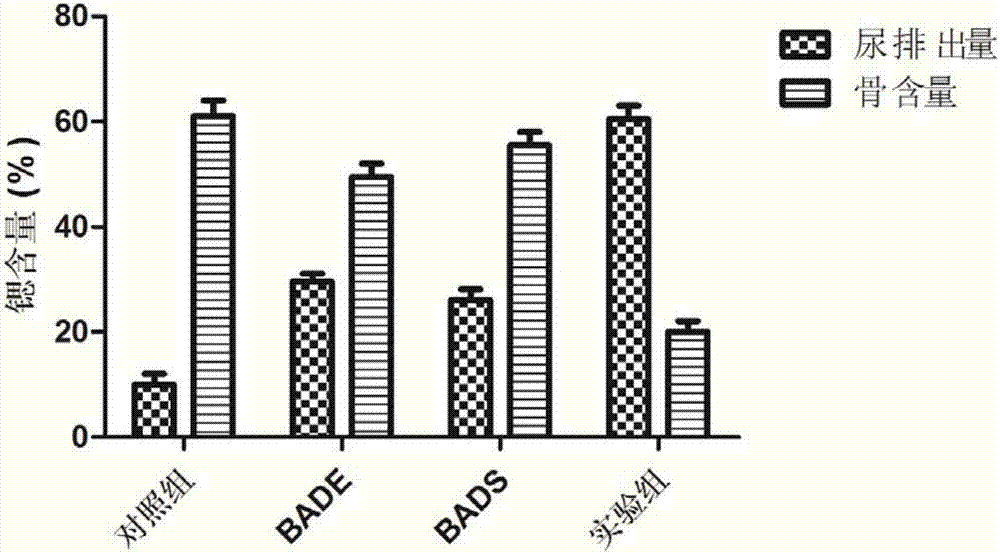1-acetamido-ethylidene-1,1-bisphosphonate and preparation method and application thereof
A technology of acetamide group and bisphosphonic acid trisodium salt, which is applied in the field of medicine, can solve the problems of unsatisfactory excretion effect, high toxicity, and poor pertinence, etc., achieve excellent excretion effect, stable properties, and ensure product purity Effect
- Summary
- Abstract
- Description
- Claims
- Application Information
AI Technical Summary
Problems solved by technology
Method used
Image
Examples
Embodiment 1
[0035] Example 1: Preparation of 1-acetamidoethylidene-1,1-diphosphonic acid calcium sodium salt
[0036] The synthetic route is as follows:
[0037]
[0038] The preparation process is as follows:
[0039] 1.1 Synthesis of ethylamine-1,1-diphosphonic acid
[0040]
[0041] Phosphorous acid (1100 g, 13.4 mol) was heated to 150° C., and acetonitrile (18 mL, 3.4 mol) was added dropwise within 0.5 h with stirring. After reacting overnight, the reaction mixture turned into a white cake. Cool, add methanol, stir, and turn into a paste. Filtration and drying gave a white powder, namely ethylamine-1,1-diphosphonic acid (482 g, yield 69%), melting point >200°C.
[0042] 1.2 Synthesis of ethylamine-1,1-diphosphonic acid trisodium salt
[0043]
[0044] Ethylamine-1,1-diphosphonic acid (600.00 g, 2.9 mol) was weighed and dissolved in 10 L of water, and magnetically stirred to form a suspension. NaOH (351 g, 8.7 mol) was dissolved in 1 L of water, and slowly added dropwise...
Embodiment 2
[0052] Example 2: Study on the physicochemical properties of calcium sodium salt of 1-acetamidoethylidene-1,1-diphosphonate
[0053] 2.1 Physicochemical properties of calcium sodium salt of 1-acetamidoethylidene-1,1-diphosphonate
[0054] Properties: White or off-white loose lump or powder.
[0055] Identification of phosphorus, calcium and sodium:
[0056] ①Take 10 mg of sample (calcium sodium salt of 1-acetamidoethylidene-1,1-diphosphonate, the same below) and dissolve it in 2 mL of water, add SnCl 2 2 drops of aqueous solution, showing blue. The principle is that the sample is subjected to SnCl 2 Phosphorus is released after reduction, and ammonium molybdate test solution is added to form "molybdenum blue".
[0057] ②Take 10 mg of the sample and add 2 mL of water to dissolve it, check the calcium salt according to the appendix of the Pharmacopoeia 2005 edition, and add ammonium oxalate test solution to form a white precipitate. The principle is that the calcium salt in...
Embodiment 3
[0083] Example 3: The effect of 1-acetamidoethylidene-1,1-diphosphonic acid calcium sodium salt on the excretion of radioactive strontium
[0084] 3.1 Experimental materials and methods
[0085] Material:
[0086] Wistar rats, weighing 130-180 g.
[0087] Radionuclide, irradiated SrCO 3 pink( 85+89 SrCO 3 There are a lot of carriers). Irradiated SrCO 3 Specific activity 5 ~ 10mCi / g, first dissolved with dilute hydrochloric acid, and then diluted.
[0088] Evacuator, calcium sodium salt of 1-acetamidoethylidene-1,1-diphosphonate, and calcium bis(diaminoethyl)ether tetraacetate (BADE-Ca, Shanghai Institute of Materia Medica, Chinese Academy of Sciences) for comparison , Diethylaminosulfide tetraacetic acid (BADS, Shanghai Institute of Materia Medica, Chinese Academy of Sciences). Wherein BADE and BADS are considered to be two complexing agents with good strontium-expelling effect in foreign animal experiments (SlatB et al. -5), BADE-Ca (BAETA-Ca) has been used in human ...
PUM
| Property | Measurement | Unit |
|---|---|---|
| weight | aaaaa | aaaaa |
Abstract
Description
Claims
Application Information
 Login to View More
Login to View More - R&D
- Intellectual Property
- Life Sciences
- Materials
- Tech Scout
- Unparalleled Data Quality
- Higher Quality Content
- 60% Fewer Hallucinations
Browse by: Latest US Patents, China's latest patents, Technical Efficacy Thesaurus, Application Domain, Technology Topic, Popular Technical Reports.
© 2025 PatSnap. All rights reserved.Legal|Privacy policy|Modern Slavery Act Transparency Statement|Sitemap|About US| Contact US: help@patsnap.com



